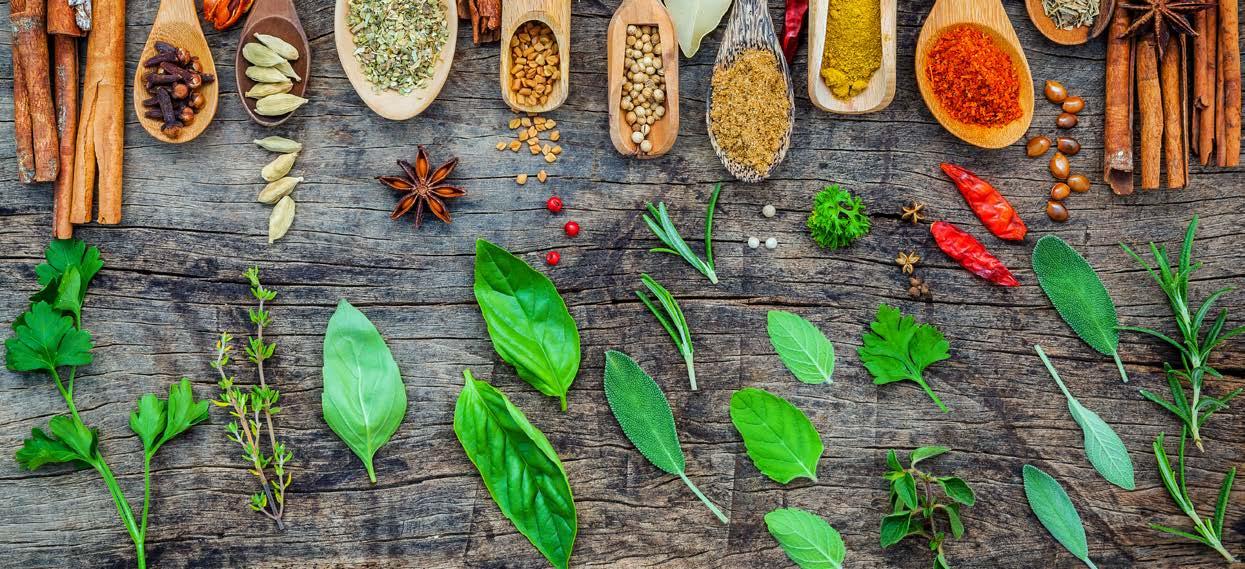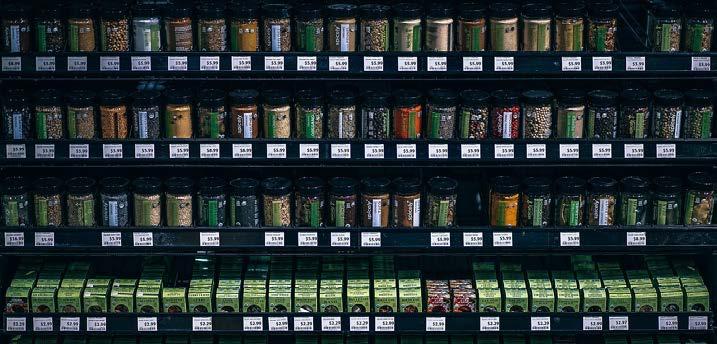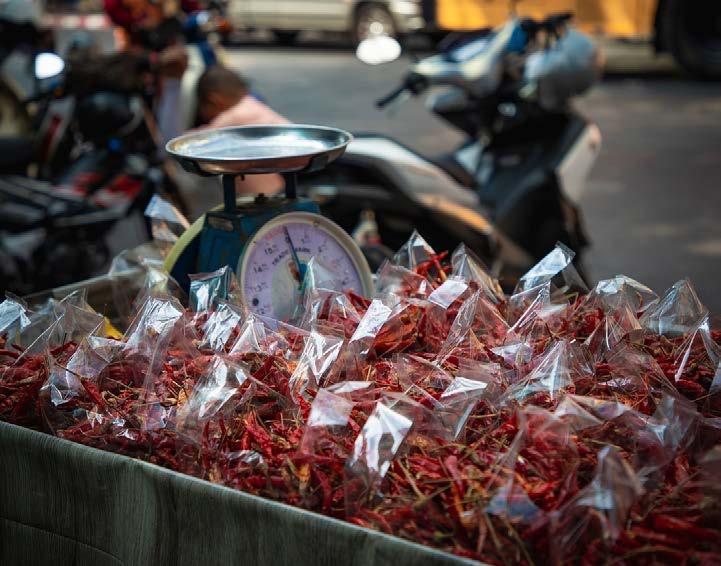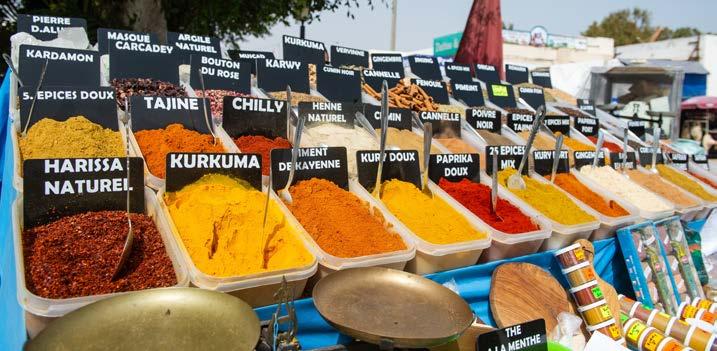
4 minute read
Herb and spice production part 5: Challenges facing the spice industry
from ProAgri BNZ 45
by ProAgri
by Maryna Steyn
Herb and spice production may offer smallholders the opportunity to expand their production or boost their income. But this doesn’t mean there are no challenges. Just like any farming venture, it is important to consider difficult factors within the industry at large.
Advertisement
Some of the issues the industry faces are more obvious than others. These include safety, quality and struggles to gain access to markets that support fair trade.
Safety concerns surrounding herbs and spices

Most of the herbs and spices produced are intended for the food market. Whenever a product is manufactured with the aim of being consumed, food safety is a major consideration. Like all natural products, spices have the potential to be a breeding ground for microorganisms and pathogens. Salmonella spp., B. cereus and C. perfringens have all been found in these food products.
To circumvent this, it is necessary to treat the dried herbs and spices with processes that reduce the microbes. Currently, one of these methods is a high-temperature treatment. The issue with this is that it significantly reduces the flavour and aroma as the oils that give the substances its taste are removed through the process. Steam also has the same effect and has the added disadvantage of adding moisture that can further lead to mould.
In the past, fumigation with sterilising gasses such as ethylene oxide was used until it was identified as a carcinogenic and banned in 1991.
Irradiation is currently the most effective way to sterilise spices and maintain flavour.
Safety concerns include an increased awareness of the authenticity of the products that people consume. Not only is this relevant on the marketing end to ensure your product is consistent and delivers the promise of what it is, but as a safety concern as well. Food allergens are dangerous and cross-contamination can easily occur, especially where the products are processed. This can also occur in fields where mustard (a known allergen) is, for instance, grown near other spices.
Steps should be taken to prevent contamination. Depending on where you sell the spice (locally or exporting international), it is good to research the food regulations in each country to ensure that you meet the guidelines.
Attention should also be given to packaging and storage requirements. There are specific storage requirements for each substance to prevent it from spoiling. Packaging needs to be safe and not interact with the spices. When spices are transported, packaging needs to keep the compounds stable and not affect the quality of the products.
The safety of products continues to be an obstacle for many growers and processors as it affects the market so deeply. If buyers or exporters cannot guarantee the safety of the product, they would not purchase it. This means that the market channels can quickly and without warning dry up, leaving growers with a crop they cannot sell.
Quality concerns regarding herbs and spices
Quality of products is a major consideration of any business, but striking the balance between the outcome and input can be difficult. After all, what you put in is what you get out.
With skyrocketing prices for inputs such as seed and fertiliser, growers feel the pinch across all crop types, including herbs and spices.
To ensure the best yields, farmers, especially those who farm on a smaller scale, may also struggle with access to machinery and equipment that can make the farming task easier. These challenges also extend to other factors that can boost production, such as irrigation, which requires capital to set up and maintain.
Farmers can, however, ensure quality in other ways, such as stricter quality control. It will require the training of farmers and labourers in methods to improve the quality of the yield as well as to run quality checks on the products throughout the process of growing, harvesting, processing, packaging and delivery.
Training for the individuals who will conduct the tests will also need additional funds that may be difficult to obtain for the emerging farmer.
Challenges for the herb and spice industry regarding the supply chain and fair trade

In Africa, the herb and spice industry is viable, but market access, sustainability and the struggles in the supply chain remain hurdles that producers and distributors need to overcome.
Market access is becoming stricter due to the safety requirements and the need for sustainable production.
Most of the growth in the African spice industry is driven by large role players such as Spice Importers and Millers CC, Freddy Hirsch Group, and Natpro Spicenet. Building relationships with the larger network of distributors will be the best approach for new spice farmers.
In recent years there has also been an increased focus on transport to provide farmers with access to ports of trade. With inaccessible roads and ever climbing fuel prices, farmers struggle to keep up with the challenges of getting their products to the buyer.
In the European market, the demand for more supply chain transparency is a big driving force that influences the industry in Africa. But although the call for transparency poses challenges, it is a good shift in the long run. This is because farmers in the third-world countries of Africa who produce spices are more susceptible to exploitation. The demand for transparency promotes fair trade by ensuring traceability of products. A European buyer can for instance find out from a distributor where the product came from and the conditions under which it was grown and processed in Africa.
This, in turn, affects the competitiveness of distributors which is a good thing in the market place.
Sources:
Africa seasoning & spices market size & share analysis - industry research reportgrowth trends (2022). Available at: https://www.mordorintelligence.com/industry-reports/africa-seasoning-and-spices-market.

Global, A. (2023) Which trends offer opportunities or pose threats on the European spices and herbs market? CBI. Available at: https:// www.cbi.eu/market-information/ spices-herbs/trends.
Mikofu, J. (2021) Tanzania: Challenges facing spices value chain unveiled, allAfrica.com. Available at: https://allafrica.com/stories/202112130470.html
A Profile of the South African herbs and spices market value chain (2021) Department of Agriculture, Land Reform and Rural Development. Available at: http:// webapps1.daff.gov.za/AmisAdmin/upload/Herb%20and%20 Spice%20Market%20Value%20 Chain%20Profile%202021.pdf.
Skariachan, D. (2022) The Tuesday interview: ‘spice exports face unrealistic safety standards in developed countries’, Deccan Herald. Available at: https://www. deccanherald.com/opinion/thetuesday-interview-spice-exportsface-unrealistic-safety-standardsin-developed-countries-1152446. html.
Food safety is an important factor in the herb and spice industry. Products need to be free from microbes and contaminants. (Source: Pixabay)










